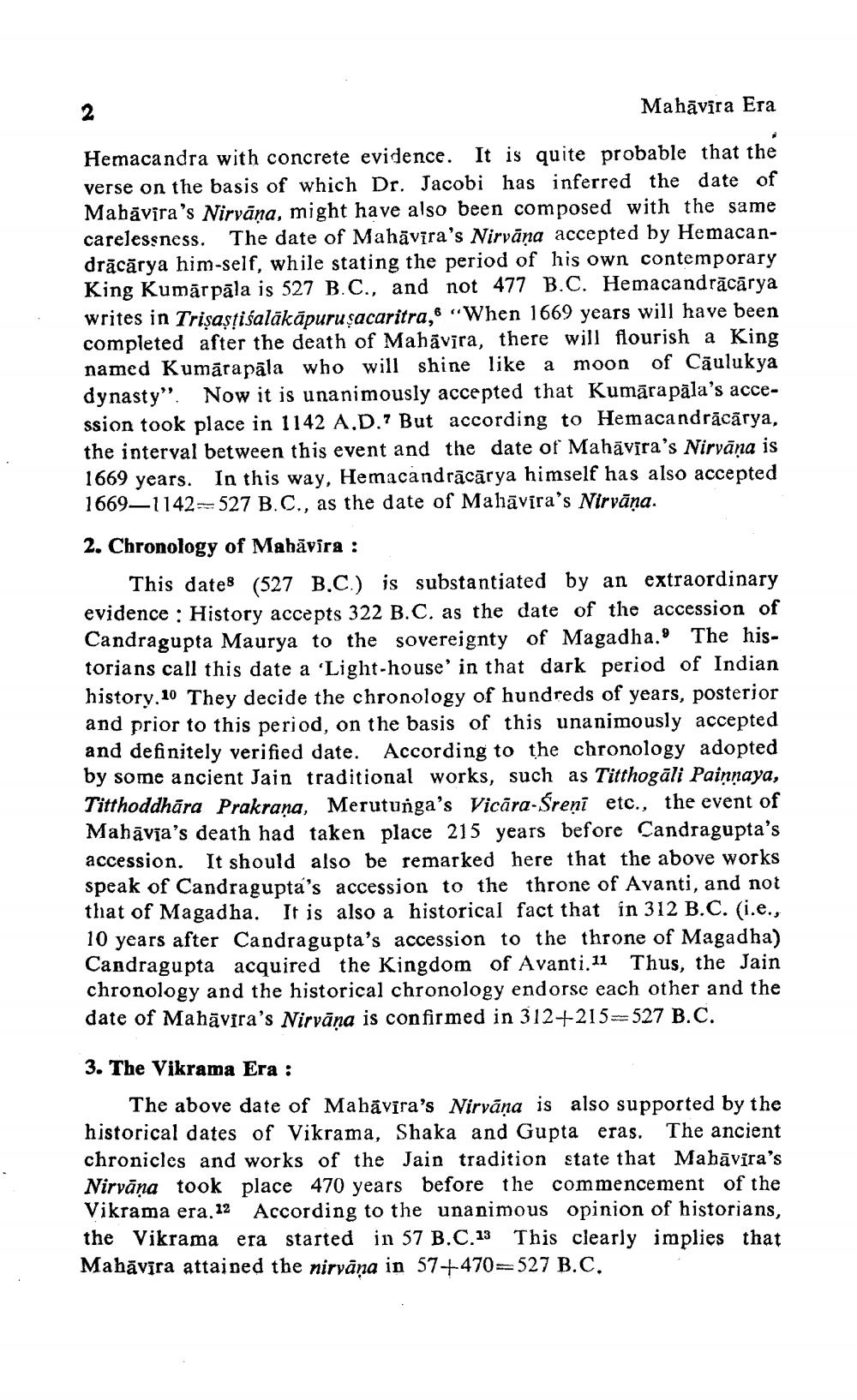________________
Mahāvira Era
Hemacandra with concrete evidence. It is quite probable that the verse on the basis of which Dr. Jacobi has inferred the date of Mabāvira's Nirvana, might have also been composed with the same carelessness. The date of Mahävira's Nirvāna accepted by Hemacandrācārya him-self, while stating the period of his own contemporary King Kumārpāla is 527 B.C., and not 477 B.C. Hemacandrācārya writes in Trisastiśaläkāpuru sacaritra,6 «When 1669 years will have been completed after the death of Mahāvira, there will flourish a King named Kumārapala who will shine like a moon of Câulukya dynasty". Now it is unanimously accepted that Kumāra pāla's accession took place in 1142 A.D.? But according to Hemacandrācārya, the interval between this event and the date of Mahāvira's Niryāna is 1669 years. In this way, Hemacandrācārya himself has also accepted 1669–1142-527 B.C., as the date of Mahāvīra's Nirvāna.
2. Chronology of Mahāvira :
This dates (527 B.C.) is substantiated by an extraordinary evidence : History accepts 322 B.C. as the date of the accession of Candragupta Maurya to the sovereignty of Magadha. The historians call this date a 'Light-house' in that dark period of Indian history.10 They decide the chronology of hundreds of years, posterior and prior to this period, on the basis of this unanimously accepted and definitely verified date. According to the chronology adopted by some ancient Jain traditional works, such as Titthogāli Painnaya, Titthoddhāra Prakrana, Merutunga's Vicāra-Śreni etc., the event of Mahāvsa's death had taken place 215 years before Candragupta's accession. It should also be remarked here that the above works speak of Candragupta's accession to the throne of Avanti, and not that of Magadha. It is also a historical fact that in 312 B.C. (i.e.,
ars after Candragupta's accession to the throne of Magadha) Candragupta acquired the Kingdom of Avanti. 11 Thus, the Jain chronology and the historical chronology endorse each other and the date of Mahavira's Nirvana is confirmed in 312+-215=527 B.C.
3. The Vikrama Era :
The above date of Mahāvīra's Nirvana is also supported by the historical dates of Vikrama, Shaka and Gupta eras. The ancient chronicles and works of the Jain tradition state that Mahāvira's Nirvāna took place 470 years before the commenceme Vikrama era. 12 According to the unanimous opinion of historians, the Vikrama era started in 57 B.C.13 This clearly implies that Mahāvīra attained the niryāna in 57+470=527 B.C.




